10 Reasons to go Golfing in the Vendée
Sponsored
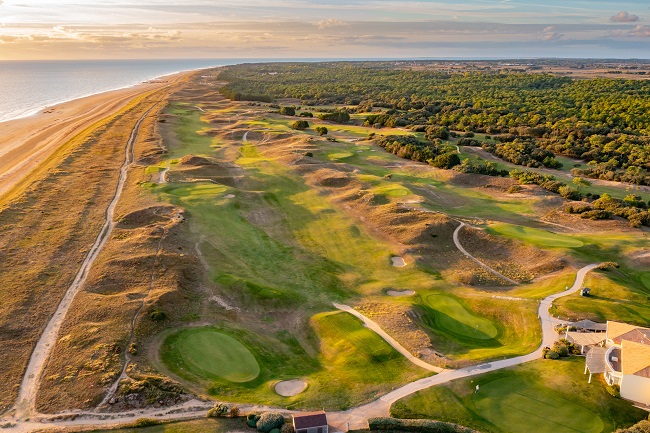
Ready to experience the best of the GolfExperience on the Vendée coast? Golfy takes you on a tour of the Vendée, a department in western France on the Atlantic coast. A privileged sporting and gastronomic destination….
1. Saint Jean de Monts golf club
In 1988, the Golf de Saint-Jean-de-Monts was born between the pine forest and the ocean. The hemmed dunes, whipped by the winds, wet by the sea spray, inspired Yves Bureau to create an 18-hole links in the Scottish tradition. Regularly ranked among the 30 most beautiful courses in France, the Saint-Jean-de-Monts golf course is above all an exceptional natural site. After 9 holes in the heart of a pine and holm oak forest, the back nine lead you along the ocean and offer spectacular views of the Ile d’Yeu. A real gem.
2. Noirmoutier island
The most beautiful option for reaching the island of Noirmoutier is the « Passage du Gois », an ancestral roadway which gets submerged at each tide. The Gois – just over 4 km long – has been used by cars since the 18th century, but it reached its peak during the 20th century with the development of tourism on an island of just under 50 km². Often nicknamed “the island of mimosas” for its mild winter climate, Noirmoutier is not just about beaches, but also about salt marshes, dunes and inland forests of holm oaks, including the famous Bois de la Chaize, near the Bay of Bourgneuf. Since the Second Empire, the island has been divided into several towns behind Noirmoutier-en-l’Île, including Barbâtre, La Guérinière, le Vieil and l’Herbaudière, the island’s main fishing and yachting port.
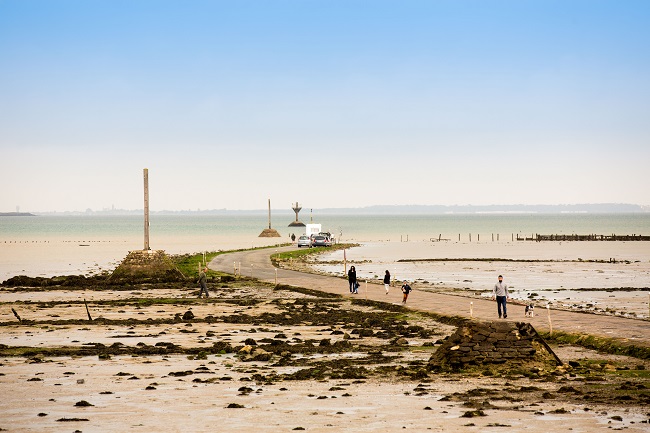
The passage du Gois to Noirmoutier island © S. Bourcier – Vendée Expansion
3. The island of Yeu
Slightly to the south-west of Noirmoutier, the island of Yeu is smaller and rounder. Called Isle-Dieu until the Revolution, its modern name is a tautology meaning “the island of the island”! The island offers two atmospheres, a sandy and green coastline to the east, towards Port-Joinville – the most urbanised and inhabited area – and a wilder, more granite coastline between creeks and cliffs to the west. The island is crossed by a long-distance footpath, the GR 80, which circles the island over a little less than 40 kilometres.
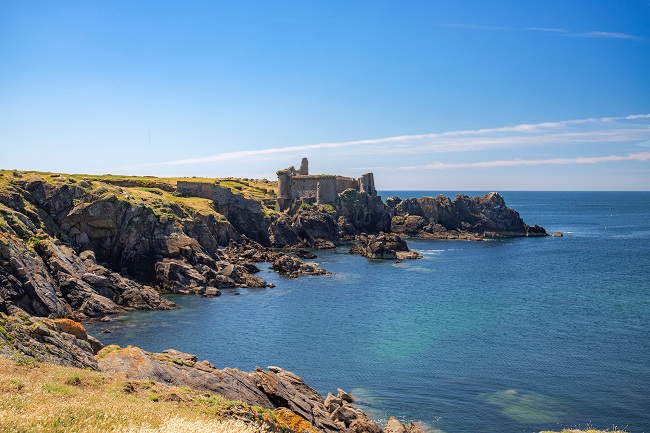
Île d’Yeu © Olivier Malard / shutterstock
4. Bourgenay golf club
On the Vendée coast, the Bourgenay Golf Club lies at the heart of a remarkable natural site. Here, just a few minutes from Les Sables-d’Olonne, facing the Atlantic Ocean, you can enjoy a place that invites total relaxation and well-being… It was built in 1990, set back from a dune planted with pine trees, a bulwark against the ravages of the wind. Pierre Thévenin designed a wise course, on a rather flat terrain, in the image of the lagoon of the Payré estuary, the small neighbouring river.
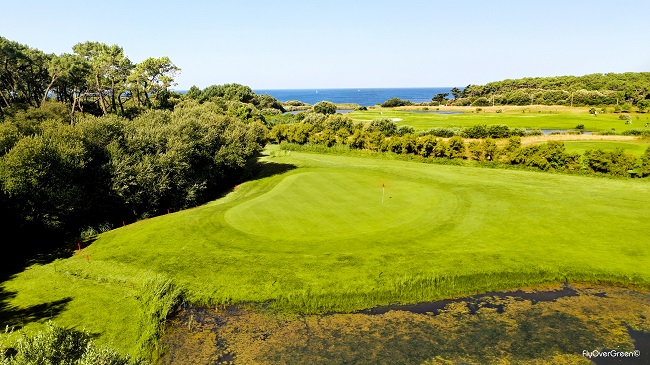
Bourgenay Golf Club © FlyOverGreen
5. Pure relaxation with thalassotherapy
The Hôtel Côte Ouest Thalasso & Spa, only a few minutes from the Bourgenay Golf Club, opens generously onto the bay of Les Sables d’Olonne. From the lobby to the 97 rooms and suites, the marine-inspired decoration invites you to travel, to dreams carried by the winds. Furniture from legendary liners, deckchairs on the terrace, knick-knacks, portholes, everything allows for escape, even if it is virtual! The Thalasso area is ideal for relaxing, letting yourself go between the treatments, the spa and the fitness area where the most modern machines compete with the sauna, the hammam, the jacuzzi, the ice fountain and the solarium.
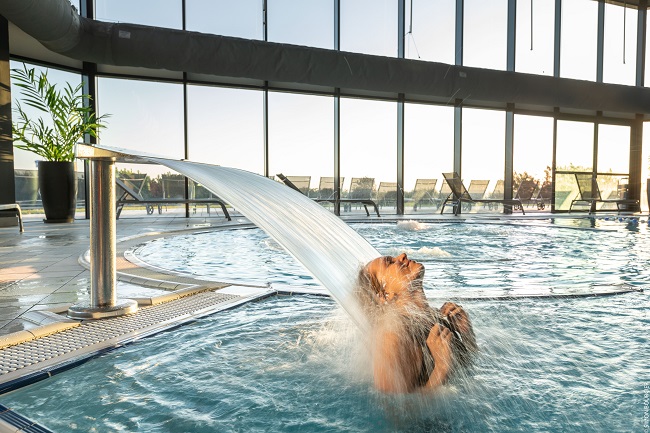
Hotel Côte Ouest and its spa ©sbourcier
6. The white gold of the area: salt
As early as the 5th century, Benedictine monks began to transform the wet marshes into salt marshes, to harvest its « white gold ». Today, on the island of Noirmoutier as well as on the Vendée coastline, these well-defined marshes benefit from the mild and airy climate which helps the water to evaporate. The salt rises to the surface and the salt grower only has to pass the lousse (a kind of rake) to collect the fleur de sel before it is packaged and marketed. Although the flower is the most prized by restaurateurs, the exploitation of salt and coarse salt also provides a living for around a hundred producers. Over the last 15 years, the profession has found a new popularity with young salt producers, ready to invest in an ecological and profitable activity. This is a way of perpetuating the profession and the island’s artisanal activity.

The Vendée salt marshes © Thierry Odéon – Bouin – Marais Breton
7. Sables d’Olonne’s golf course
In 1989, the Golf des Sables d’Olonne was open on the site of the Château de la Pierre Levée, a replica of the Petit Trianon in Versailles dating from the 18th century. Designed by the architect Bruno Parpoil, this course flourishes in the Vendée bocage. If the outward journey is powerful, the return journey is more technical and often flirts with ponds. In this family club, the unceasing efforts to improve the quality of the terrain are bearing fruit around the greens. The wisteria-covered farmhouse is pleasant, especially when the anglers return with their baskets full. The menu is then adapted to the day’s fishing for the pleasure of all, gathered on the terrace.
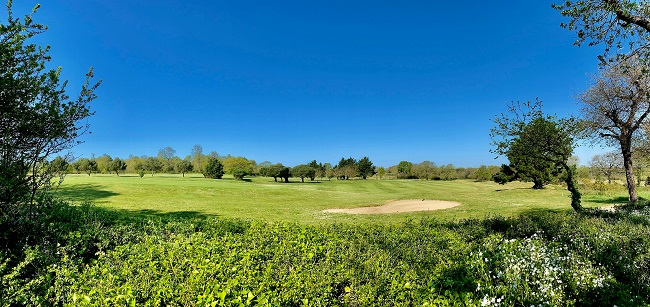
Golf des Sables d’Olonne
8. The Vendée gastronomy
Although salt is an essential condiment in many recipes, the gastronomy of the Vendée goes beyond these little piles of white gold. Starting with the gâche, this braided brioche, sweetened and enriched with fresh cream, on every table at every meal. On the savoury side, the Vendée ham prepared with brandy, herbs and spices goes very well with mogettes, the white beans of the region. The sardines of Saint-Gilles-Croix-de-Vie are a delight for young and old alike, as is the thick and generous poultry of Challans, best roasted with fleur de sel!
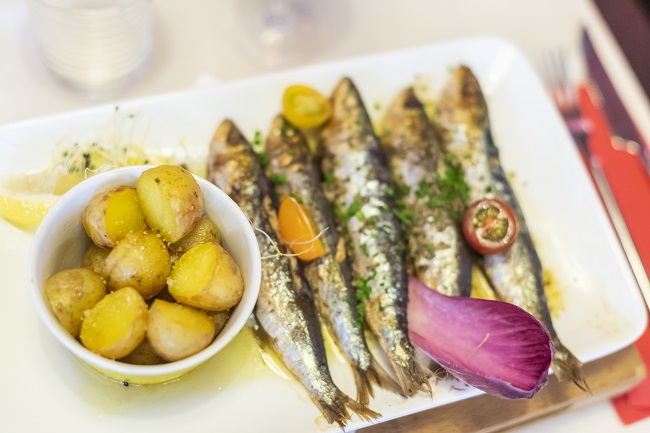
Saint-Gilles-Croix-Vie’s famed sardines © Julien Gazeau – Vendée Expansion
9. The Vendée Globe challenge
Since Titouan Lamazou’s victory in 1990 and his single-handed round the world race completed in just under 110 days, the Vendée Globe Challenge, the most difficult ocean race according to the specialists, has never ceased to inspire skippers from all over the world. In nine editions, every four years, 115 sailors have set off from Les Sables d’Olonne, many of them have suffered damage, 22 of them have completed at least one Vendée Globe, which is quite an achievement. In 2017, Armel Le Cléac’h – an excellent golfer – set the record for the event in 74 days 3 hours 35 minutes and 46 seconds. This record is to be beaten during the 10th edition, which will start from Les Sables on Sunday 10th November 2024, towards the Equator and its doldrums, the Cape of Good Hope and the Indian Ocean, then Cape Leeuwin off the coast of Australia, before tackling Cape Horn and its Dantean waves, and, to finish, the Azores high and its storms…, with the best competitors due to return around 7th March 2025.
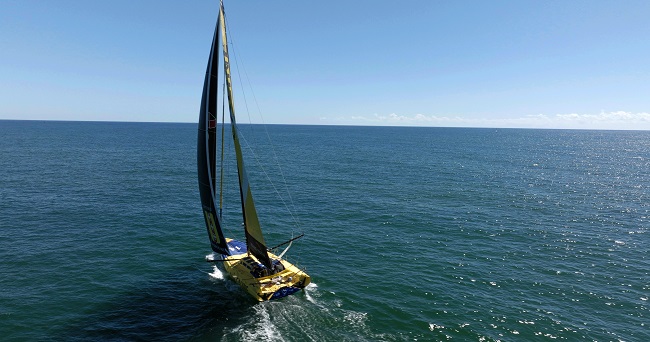
Vendée Globe Challenge © La-Mie-Câline
10. The Puy du Fou’s shows
If there’s one place you can’t miss in the Vendée, it’s Le Puy du Fou! Repeatedly voted the world’s best amusement park, it offers a veritable plunge into history. Stroll through the alleys of 4 reconstructed villages, from the Viking era to the Belle Epoque. Take in breathtaking shows, including Cinéscénie, the world’s largest night-time show, which traces history from the Middle Ages to the Second World War, in a romance blending real events and French legends. It’s an enchantment played out every evening by 4,200 extras and extraordinary technical resources.
To discover all the splendours of the Vendée, visit GolfExperience
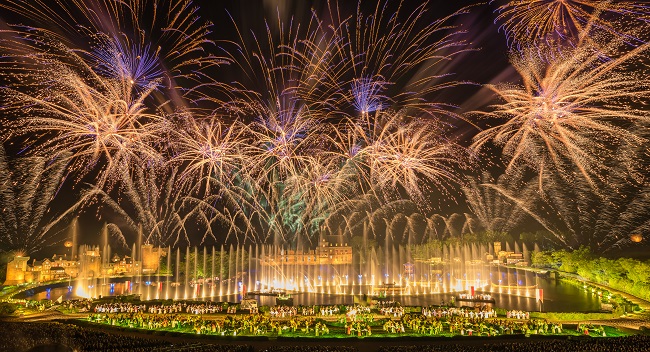
The spectacular Cinéscenie show of the Puy du Fou © Martin Sylvos
Lead photo credit : The golf course of Saint-Jean-de-Monts
Share to: Facebook Twitter LinkedIn Email
More in Atlantic coast, golf courses in France, golfing, Vendée
Leave a reply
Your email address will not be published. Required fields are marked *



